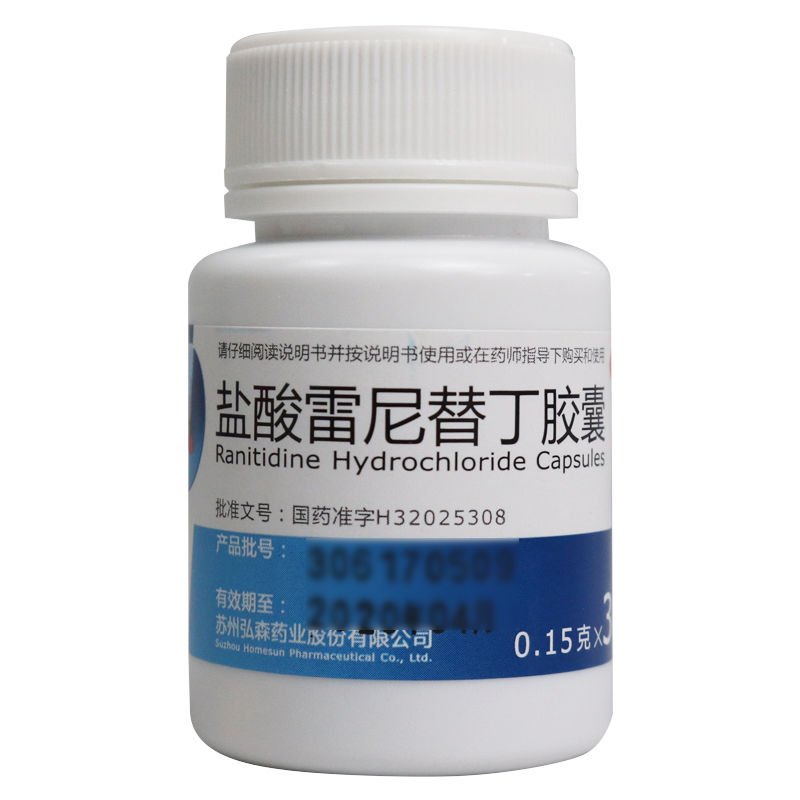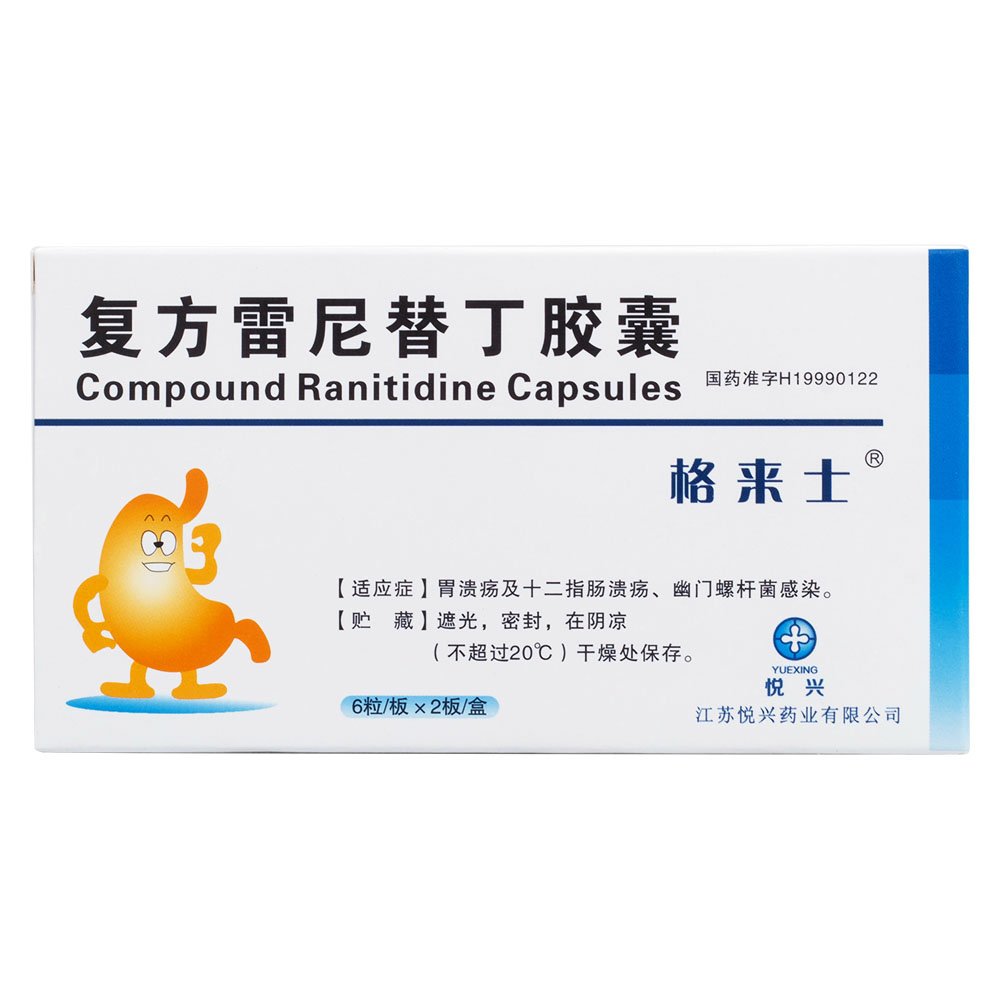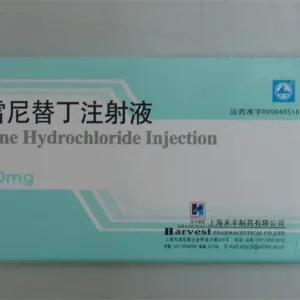Ranitidine
Function:
It is used to treat duodenal ulcer, gastric ulcer, reflux esophagitis, Zollinger-Ellison syndrome and other high gastric acid secretion diseases. For the treatment of duodenal ulcers complicated by Helicobacter pylori (Hp) infection. For the treatment of non-ulcer dyspepsia. Intravenous administration can be used to treat peptic ulcer bleeding, diffuse gastric mucosal lesion bleeding, anastomotic ulcer bleeding, and prevent rebleeding after gastric surgery. Intravenous administration can be used to treat acute gastric mucosal damage complicated by stress and acute gastric mucosal damage caused by aspirin.
Dosage:
For hyperacidity and prevention of stress ulcers, take 150 mg orally twice a day in the early morning and before going to bed. For duodenal ulcer, gastric ulcer, reflux esophagitis and other high gastric acid secretion diseases, take 150 mg orally twice a day; or 300 mg once a day before going to bed. For maintenance use, take 150 mg once a day before going to bed. For Zollinger-Ellison syndrome, take 600-1200 mg orally once a day. Intravenous infusion for upper gastrointestinal bleeding, small-volume injection or powder injection 50 mg once, twice a day or once every 6-8 hours, slow intravenous infusion for 1-2 hours; large-volume injection 100 mg once, 2 times a day times, slow intravenous infusion. Intravenous injection, 50 mg once, twice a day or once every 6-8 hours, slow (more than 10 minutes) intravenous injection. Intramuscular injection, 50 mg once, twice a day or once every 6-8 hours. To prevent gastric reflux and aspiration pneumonia after general anesthesia or major surgery, intravenous infusion, 50-100 mg once, diluted with 200 ml of 5% glucose injection, slow intravenous infusion 1-2 times 60-90 minutes before general anesthesia or major surgery Hour. Intravenous injection, 50-100mg once, slowly intravenously 60-90 minutes before general anesthesia or major surgery. Renal insufficiency: Patients with severe renal insufficiency should reduce the dose and monitor their plasma concentration. When used for duodenal ulcer, gastric ulcer, reflux esophagitis and other high gastric acid secretion diseases, the dose for patients with severe kidney disease is reduced to 75 mg once, twice a day. Hepatic insufficiency Patients with severe hepatic insufficiency should reduce the dose and monitor their plasma concentration. For children with upper gastrointestinal bleeding and to prevent acid reflux and aspiration pneumonia after general anesthesia or major surgery (children 8 years old and above), intravenous infusion, 2-4 mg/kg once, continuous infusion for 24 hours. Intravenous injection, 1-2mg/kg once, once every 8-12 hours.
Adverse reactions:
Cardiovascular system: tachycardia, bradycardia, asystole, atrioventricular block, ventricular premature beats, vasculitis. Metabolic/endocrine system: gynecomastia, galactorrhea. Musculoskeletal system: arthralgia, myalgia. Genitourinary system: impotence, decreased libido, acute interstitial nephritis, increased serum creatinine. Immune system: Hypersensitivity reactions (eg, bronchospasm, fever, rash, eosinophilia), allergic reactions, angioedema. Nervous system: headache, dizziness, vertigo, insomnia, drowsiness, reversible involuntary movement disorder. People with liver insufficiency may occasionally experience disorientation after taking the drug. Mental: Reversible confusion, agitation, depression, hallucinations. People with liver insufficiency may occasionally experience anxiety after taking the drug. Liver: elevated aminotransferase, hepatocellular hepatitis (with or without jaundice), cholestatic hepatitis (with or without jaundice), mixed hepatitis (with or without jaundice), liver failure. Gastrointestinal: Nausea, constipation, vomiting, diarrhea, abdominal discomfort, pain, pancreatitis. Blood: leukopenia, granulocytopenia, thrombocytopenia, agranulocytosis, pancytopenia (sometimes accompanied by bone marrow hypoplasia), aplastic anemia, acquired immune hemolytic anemia. Skin: Rash, erythema multiforme, alopecia. Eyes: Reversible blurred vision (suggesting changes in accommodation function). Others: discomfort, fatigue, local reactions to intravenous injection (burning sensation, itching). Once an adverse reaction (side effect) occurs, the medication should be stopped immediately and the doctor should be notified so that the doctor can judge the severity of the adverse reaction and take necessary measures.
Drug contraindications:
Contraindicated in children if allergic to this product Contraindicated in pregnancy Contraindicated in lactation Contraindicated in patients with liver and kidney dysfunction Use with caution
Share:
Products
Our offers
Health Classification
Let us work together to protect precious health
































